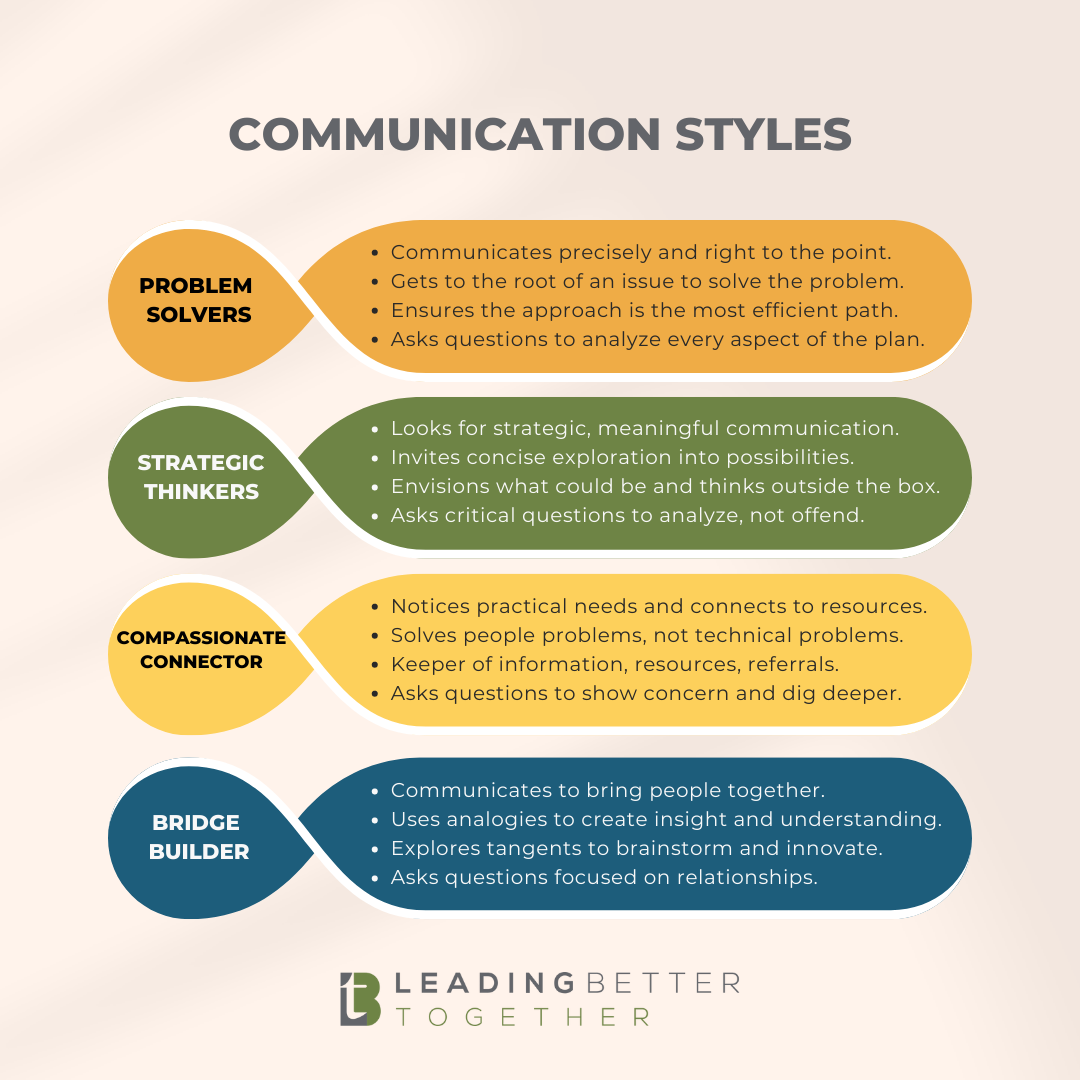Do the Communication Dance
Mar 01, 2023
Wouldn’t it be awesome if we just woke up one morning as great communicators? We would know what to say, how to say it and when to speak or keep quiet. Results would be positive influence, greater connection, better collaboration, sustainable results and more! However, communication is a dance that takes two partners moving together in rhythm. You can’t learn to dance overnight, AND the rhythm of great communication can’t be learned overnight. In fact, with each new “dance partner” we must practice applying our skills in a different way to find that rhythm once again.
Last week we talked about the building blocks of meaningful communication that allow us to apply powerful communication skills in a more relevant way. Those foundations are critical to knowing our own communication pitfalls and what new skills we can practice to improve communication.
Improving communication will require being resilient. Experimenting, practicing and persisting in the face of adversity is necessary to the learning process. Throwing out the new skill and going back to old patterns will feel easier. And at first it might even feel more effective because sometimes you still get the results you want. But, remember, communicating is like dancing – it requires partnership and rhythm.
To increase the odds of success in learning a new skill, plan your communication experiments.
First, decide what new skill you would like to practice. There are lots of different books, blogs and lists on great communication skills. Here are a few to get you started. What new skill will you experiment with today?
Clarify expectations for a task to be done, for the goal of a conversation or for the outcomes of an activity. When expectations are not met, results are derailed and relationships suffer. Taking the time to even create shared expectations for the conversation itself can have a positive impact on the outcomes.
Paraphrase or summarize what you heard instead of jumping into your agenda or asking questions. The pause you create by just repeating back what you heard may lead to greater awareness than a pointed question or a solution to their problem.
Focused listening begins with an engaging body posture, eye contact, taking notes, acknowledging you heard what was said even if you don’t agree with it. These behaviors help your “dance partner” know that you are tuned in to their moves and rhythm. Start a conversation with this kind of listening for the first 5 – 10 minutes and see what happens.
Ask inviting questions that offer an opportunity to the communicator to expand on what they are saying, without judgment, without leading into the answer you want to hear. Quiet the conversations that are going on in your head – especially those thoughts that are crafting what you will say next. Truly listen and let your natural curiosity take the conversation deeper. Some questions might be:
“Tell me more about _____.”
“What did you mean by ______?”
“I’m curious about ______.”
“What concerns you about _______?”
“What impact does this have on you?”
Next, think of a relationship where you can “try on” new communication skills.
You already have a good relationship with a manager. Let them know that you would like to experiment with a new skill in your next 1:1 meeting. Give it a try and ask for their feedback.
Pick an easy, lighthearted topic to talk about with your spouse. Try out your new skill in the conversation (when conflict is not present!). Notice what went well for you in the conversation and ask your spouse. Adjust and try again.
Facing a difficult conversation? Role play the conversation with a friend experimenting with some of your new skills. Encourage your friend to do the dance with you – ask the tough question, don’t make it easy on you. This is your safe place to try new things on and see if they “fit”.
Finally, evaluate improvements in communication. What has changed in your interactions? How have relationship dynamics changed? What do you see as results of your communication experiments? What will you try next?
Many conversations include moving toward a result of some kind. Making a decision. Defining a goal. Solving a problem. Practice some of these listening skills early in the conversation before jumping to action and you may be surprised by the better decisions, clearer goals and problems solved.


Stay Connected
Get resources, motivation, and leadership support
delivered straight to your inbox.
We hate SPAM. We will never sell your information, for any reason.


